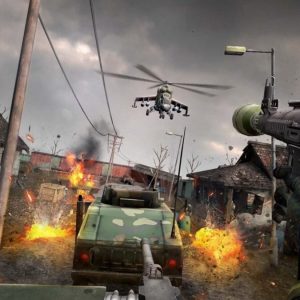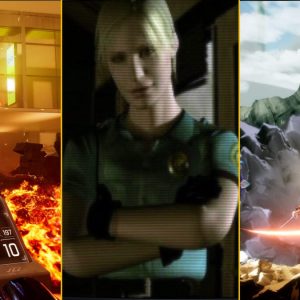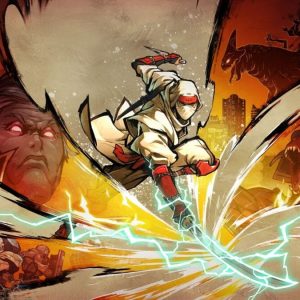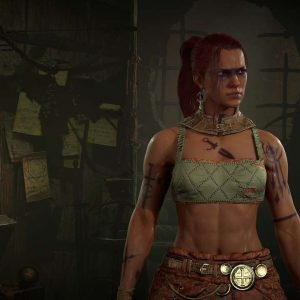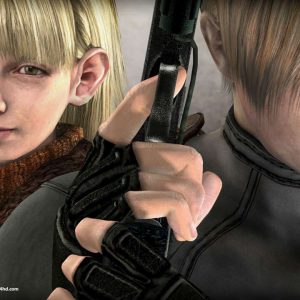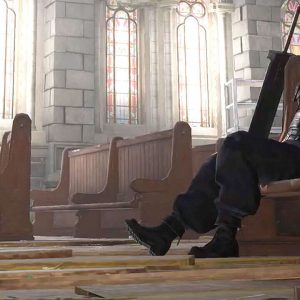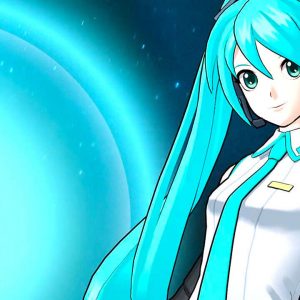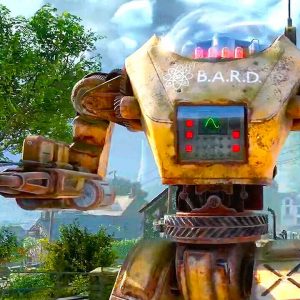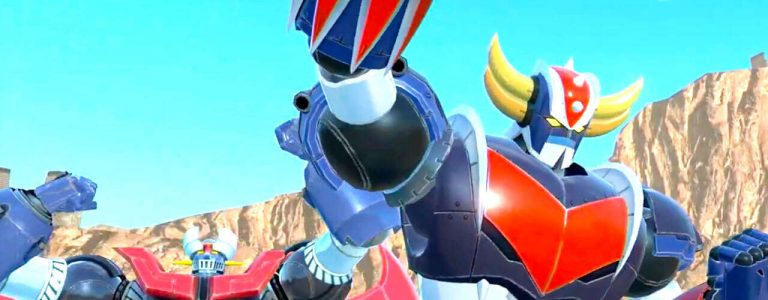It may seem like a long leap to make from the R-rated streets of Tokyo’s red light district to the yarrr-rated pirate-infested waters of the Hawaiian islands, but Like a Dragon: Pirate Yakuza in Hawaii has successfully pulled off the switch from bareknuckling to swashbuckling with confidence and considerable flair. This jaunty adventure jettisons the series’ typical turf war cliches and pulpy plot twists in favour of spinning a streamlined and spirited tale of seafaring and treasure hunting, without sacrificing any of the addictive diversions and slapstick silliness that have long become its hallmarks. As far as spin-offs from the mainline entries go, Pirate Yakuza makes for an absolutely invigorating seachange that left me feeling perkier than a parrot on a pirate’s shoulder.
Essentially a coda to the events of 2024’s Like a Dragon: Infinite Wealth, Pirate Yakuza’s off-the-wall story focuses on loveable series shitstirrer, Goro Majima. It gets straight to it: after awakening on the shores of a secluded island with amnesia, he promptly befriends an enthusiastic young boy and his adorable pet tiger cub, commandeers a pirate ship that for entirely unexplained reasons seems to have sailed in straight out of the 1700s, and sets about on a thrilling quest to find the lost treasure of a legendary sunken Spanish ship. Perhaps as a result of his temporary memory loss, Majima is considerably less manic in Pirate Yakuza than he has been in previous Like a Dragon stories, but he’s still every bit as gleefully mischievous. There was never a dull moment between him and his evergrowing gang of goons turned treasure-seeking Goonies as I explored the seas and shores of Pirate Yakuza’s vibrant tropical setting.
It’s an unpredictable voyage that regularly veers from intense highs to more laidback lows, much like the waves that Majima sails upon. In one moment I’d be trapped in a desperate battle against a towering sea creature or an army of pirates of almost Dynasty Warriors-esque proportions, while the next I’d be adopting homeless animals off the street to shelter in my personal petting zoo and throwing parties for me hearties whenever morale amongst my crew was on the wane. Pirate Yakuza doesn’t just regularly hoist the Jolly Roger, it also lets its freak flag fly in a consistently entertaining fashion – from its rousing opening musical number through to the dynamic dance sequence that drops the curtain on its story 25 hours later – and it kept me hooked harder than a handshake from, well, Captain Hook.
Nautical by Nature
While 2023’s Like a Dragon Gaiden experimented with a fairly superficial secret agent spin on the series’ template, Pirate Yakuza steers Like a Dragon into some truly uncharted waters. There’s plenty of lively naval combat to be enjoyed aboard Majima’s adopted pirate ship, although to be clear, in terms of exploration it doesn’t attempt to match the sense of freedom I felt in the Caribbean setting of 2013’s Assassin’s Creed IV: Black Flag. Instead, Pirate Yakuza’s waters are broken down into a handful of smaller maps to warp between rather than one big open waterworld, and outside of the main Honolulu hub and a stunning ship graveyard turned casino district called Madlantis, many of the smaller islands are constructed out of the same recycled layouts. So over time, the sense of discovery slightly diminished whenever I dropped anchor and saw something a bit too familiar.
Still, there’s enough spectacle and strategic depth to the actual open-water combat that I remained engaged anytime I was at the helm of Majima’s ship. In each bilgewater battle you can attack front-on with machine gun fire or perform a boost-based ram into an enemy’s hull, as well as manouevre alongside a rival to deliver more damaging broadside attacks from your port or starboard cannons. These cannons can be upgraded by harvesting resources found drifting at sea or tucked around Pirate Yakuza’s smattering of ports, and although Majima’s frigate can be equipped with everything from flamethrowers to freeze guns, I soon set my sights on scraping together enough spare parts to outfit my vessel with powerful lasers to cut crossways through my opponents from ear to buccaneer.
I was also regularly recruiting new pirates to my crew in every port I docked in, and it quickly became clear that assigning a crew member to specific roles had measurable impacts on each naval skirmish. Individual members of your pirating posse are ranked in areas like attack, defense, and cannon power, and anytime I placed some underpowered or inexperienced comrades in, say, my boarding party, I was forced to watch my crew go from ragtag to bodybags in quick succession.
After some experimentation I eventually got the balance right, and that included determining the right pirate to be my first mate. While some candidates offered increased damage buffs or additional fuel drums to burn with my ship’s boost, I opted to promote a mechanic into the role because it gave me two extra repair kits per clash. Given I approach naval battles like Dave Chappelle approaches his stand-up sets – always on the offensive and typically blazed up by the end – it was enormously helpful to have those extra kits to haul my battlescarred hull to glory.
Some of the naval combat functions do seem a little superfluous, though. For example, at no point in the story did I feel the need to step away from the helm in order to use Majima’s rocket launcher, since the ship’s artillery usually seemed ample enough, and it was also rare that I was compelled to manually put out fires on deck or thaw out ice that was blocking my cannons. That did change, however, after I beat the story and returned to complete the 30-odd escalating battles in Madlantis’ pirate coliseum, as surviving its toughest encounters demanded the considered use of every ability at my disposal. That finally made for some welcome optional challenges outside of the main story path, but I wished they’d been in play earlier in the campaign.
Captain Hookshot
Of course, given that this is a Like a Dragon adventure, there are still plenty of opportunities for fisticuffs either ashore or on-deck anytime you board an enemy ship by force. In the default Mad Dog fighting stance, Pirate Yakuza reverts to the familiar brand of combo-based street fighting that was a staple of the series before the main entries shifted to turn-based brawls with 2020’s Yakuza: Like a Dragon. Majima can pull off fast and fluid combinations of punches, kicks, and rapid dagger slashes, each attack enhanced by flashy neon movement trails and punctuated by enemies that erupt into fountains of gold coins as though they’re crowds of criminal question blocks from the Mushroom Kingdom. However, Majima feels noticeably more agile than Kazuma Kiryu ever was, with a snappier quickstep to open overbalanced enemies up to counter attack, plus the useful ability to jump and air-dodge out of harm’s way anytime he’s overwhelmed by a surprisingly numerous horde.
How do you rank these Ryu Ga Gotoku Studio games?
How do you rank these Ryu Ga Gotoku Studio games?
Even so, once I’d unlocked the Sea Dog fighting stance a few hours into my 25-hour tour of Pirate Yakuza, I basically never looked back. While in previous Like a Dragon instalments I’ve relished the freedom to switch between stances to best counter each enemy type or situation, Sea Dog is basically a one-size-fits-brawl fighting style that feels adaptive enough to suit any given showdown. This pirating pose allows Majima to cut loose with a pair of cutlasses, either hurling them like bladed boomerangs or performing a brutal ballet of spinning slashes to cut through enemies in clusters. It equips him with a handy hookshot that allows him to zip directly to a targeted enemy like some sort of seafaring Spider-Man, which is extremely useful for picking off the more heavily-armed goons that tend to snipe you from the far edges of each battle arena. If that’s not enough, it also gives Majima a flintlock pistol of his own, and after investing in the skill tree to increase its power and widen its radius, I was able to use it to wipe out more pirates than dysentery at the charged-up press of a button.
So well-rounded and entertaining to use was the Sea Dog style, in fact, that the only time I ever felt the need to switch back to Mad Dog was in order to unleash Majima’s slightly overpowered Doppelganger attack. Available after you’ve chained together enough successful attacks to fill up a special meter, this devastating ability conjures up twin Majima clones that swarm enemies and chew through their health bars for a short time like a pair of piranhas, and I was happy to have it in my back pocket for whenever I came up against one of the more brutish boss encounters. Although I think Infinite Wealth’s hybrid turn-based combat has quite rightfully become the standard for the Like a Dragon series, Pirate Yakuza’s flashy fighting remained engaging from the first sword slash through to the final throat cut, and I found it to be a substantial step up from the gadget-heavy grappling of Like a Dragon Gaiden.
Pleasure Island
Although Pirate Yakuza’s Honolulu setting is more or less the same sundrenched sprawl that featured in Infinite Wealth, there are enough new secrets and distractions that made it rewarding to explore a second time around. Outside of combat, Majima’s hookshot can be employed to zip him up to anchor points on certain buildings, meaning that treasure chests full of alternate character costumes and other goodies are tucked away on hotel awnings and various other elevated spots all over the island. There are also countless bounty targets to track down and beat up for beefy cash bonuses, and games for the safehouse Master System to seek out. Although, I must admit that I feel like it’s about time that developer Ryu Ga Gotoku moved on to an in-game Mega Drive (or Genesis for US fans), or at the very least a Game Gear. After collecting mostly the same set of 8-bit cartridges in Lost Judgment, Like a Dragon Gaiden, and now Pirate Yakuza, I feel like I’ve well and truly mastered the Master System at this point.
But of course, there’s still more: in addition to the fiend-photographing Sicko Snap and the infectiously giddy Super Crazy Delivery minigames that return from Infinite Wealth, Pirate Yakuza brings back Dragon Kart from Yakuza: Like a Dragon, only this time in addition to its riotous racing circuits they’ve bolted on an arena-based battle mode which made for some intense, four-wheeled firefights. Meanwhile, the series’ standard-issue batting cage minigame has been revitalised by swapping baseballs for cannonballs, and I had a great time knocking destructive dingers into descending stacks of explosive barrels.
I was also delighted with almost every substory I completed in Majima’s adventure. Some were utterly wholesome, like the time I agreed to bring an aging businessman aboard my ship in order to live out his boyhood fantasies of becoming a pirate. Others were funny pisstakes of online culture, like when Majima was recruited to become a Virtua Fighter 3 streamer and I had to choose the liveliest possible reactions for him in order to prevent the comments section from turning too hostile. Others still were completely bonkers, like the substory that suddenly spins out into a live-action episode of a dating show inspired by The Bachelor, as the ship’s cook Masaru tried to woo five different potential dates with hilariously awkward results.
There’s even a supersized substory that sees Majima and his ever expanding crew hunt down the dread pirate Zeus and his intimidating Devil Flags fleet. This chunky optional quest opened up additional maps to navigate, including an archipelago of volcanic islands and even an ice realm, each overloaded with increasingly powerful naval vessels to face off against and pirate headquarters to plunder. Not only is undertaking this journey worthwhile purely for harvesting the doubloons required to upgrade Majima’s ship with decked out drip – including a carved Kazuma Kiryu figurehead for its bow – but it’s also the only way to track down all four fabled instruments of the Dark Gods. These cursed instruments can be charged up during on-shore skirmishes and unleashed to spectacularly turn the tides of a battle, with a violin that brings the violence by summoning a horde of spectral land sharks to turn enemy packs into fleshy snacks, or an electric guitar that can be energetically shredded while a towering ape stomps into the fray and chimp-slaps your opponents straight into Davy Jones’ locker. These are some of the most powerful attacks in Pirate Yakuza, so it’s a little odd that they’re locked away in an entirely optional substory that’s so easy to overlook.





